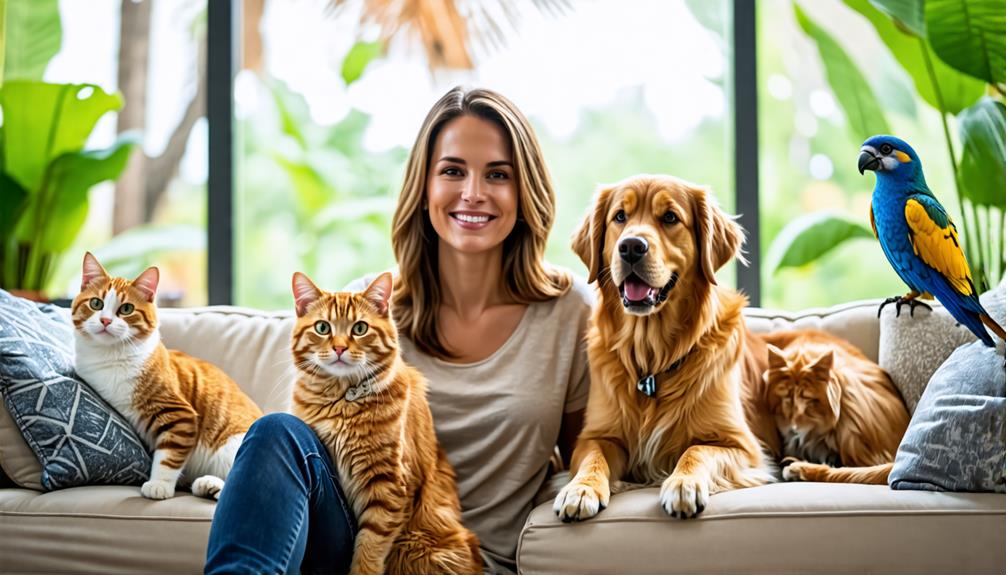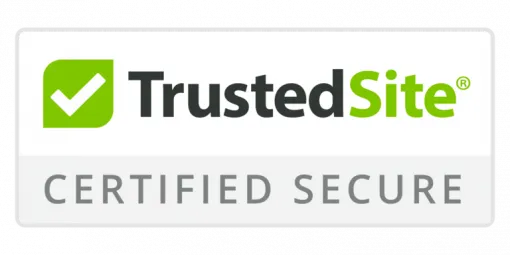Starting a Vacation Pet Sitting Side Hustle
When planning a vacation, pet owners often seek reliable care for their pets, and this is where a vacation pet sitting side hustle comes in. Offering in-home pet sitting can be a compassionate and lucrative solution, enabling pets to stay in their familiar environment, which reduces anxiety and maintains their regular routines. Here's how you can start and effectively run a vacation pet sitting service:
- Understand the Services Offered: Pet sitting services can range from dog walking and overnight stays to tailored care options that cater to individual pet needs. Familiarize yourself with these services to offer a comprehensive package.
- Get Certified and Insured: While not always mandatory, obtaining pet care certifications and insurance can build trust with pet owners and protect you from potential liabilities.
- Market Your Services: Create a professional website and use social media to promote your services. Word of mouth and online reviews can also help to build your reputation.
- Choose the Right Clients: Screen potential clients and their pets to ensure a good fit. Meet the pets beforehand to understand their behavior and specific needs.
- Prepare for Pet Sitting: Make a checklist of supplies and instructions needed for each pet. This includes food, medications, favorite toys, and emergency contacts.
- Maintain Regular Routines: Stick to the pet's usual schedule for feeding, walking, and playtime to ensure they remain comfortable and happy.
- Communicate with Pet Owners: Keep pet owners updated with regular photos and messages about their pet's well-being. This can provide them with peace of mind during their vacation.
- Seek Feedback and Improve: After each pet sitting job, ask for feedback to improve your services. Positive testimonials can also attract more clients.
By understanding how pet sitting services work, marketing yourself effectively, and ensuring the well-being of pets in your care, you can build a successful vacation pet sitting side hustle. This venture not only offers you a flexible income but also provides pet owners with the confidence to enjoy a stress-free vacation.
Key Takeaways
- Vacation pet sitting allows pets to remain in a familiar environment, reducing anxiety and stress.
- Pet sitters provide individualized attention, maintain regular routines, and offer companionship while owners are away.
- Services include dog walking, overnight stays, in-home visits, pet boarding, and tailored services to meet unique pet needs.
- Pet owners should evaluate sitters' qualifications, including experience, references, background checks, and certification from reputable organizations.
Benefits of In-Home Pet Care
For many pet owners, leaving a beloved companion behind while traveling can be a stressful and worrisome experience. This is where in-home pet care as a side hustle comes into play, offering a reassuring alternative that allows pets to remain in the comfort and familiarity of their own environment while providing an excellent opportunity for individuals to earn extra income. This type of care provides numerous benefits, including the companionship that pets crave.
In-home pet care allows pets to maintain their regular routine, including feeding times, playtime, and sleep schedules, which helps to reduce anxiety and stress caused by the owner's absence. This consistency in routine can be a selling point for pet owners, making the side hustle both rewarding and in demand.
Additionally, in-home pet care offers the convenience of not having to worry about transporting pets to a boarding facility or imposing on friends and family. This convenience is a major advantage and can attract more clients. Moreover, in-home pet care allows pets to receive individualized attention and care, which is particularly beneficial for pets with medical needs or special requirements.
How Pet Sitting Services Work
With the benefits of in-home pet care established, understanding the operational aspects of pet sitting services becomes the next logical step for individuals considering this rewarding side hustle. This allows them to effectively meet the needs of pet owners and their beloved companions. Pet sitting services typically involve a consultation to discuss the pet's needs, preferences, and any specific requirements, such as medication administration. A pet sitting contract is then drawn up, outlining the scope of work, payment terms, and responsibilities of both parties.
| Service Component | Description | Benefits |
|---|---|---|
| Consultation | Initial meeting to discuss pet needs and preferences | Guarantees tailored care, sets expectations |
| Pet Sitting Contract | Formal agreement outlining scope, payment, and responsibilities | Protects both parties, clarifies terms |
| Pet Sitting Technology | Utilization of software or apps for scheduling, communication, and updates | Enhances organization, facilitates communication |
Types of Pet Sitting Services
Pet sitting services can be an excellent side hustle, offering a variety of specialized care options to cater to the diverse needs of pets and their owners. These services range from dog walking and overnight stays to administering medication and providing companionship. They offer pet owners flexible and customizable solutions to ensure the well-being and happiness of their pets while they are away.
Dog walking services are perfect for pets needing regular exercise and mental stimulation. As a pet sitter, you can take dogs on walks, providing them with physical activity and opportunities for socialization. Additionally, pet sitting services may include pet boarding, where you care for pets in your own home. This option suits pets that thrive in a home environment and require constant attention.
In-home pet sitting is another lucrative service, where you visit pets in their own homes, providing them with a sense of familiarity and comfort. This is particularly ideal for pets that are anxious or prefer their own environment. By offering a range of services, you can cater to the unique needs of each pet, ensuring their physical and emotional well-being while their owners are away.
Starting a pet sitting side hustle allows you to earn extra income while spending time with animals, making it a rewarding and flexible opportunity.
Choosing the Right Pet Sitter
When choosing a pet sitter, it is vital to carefully evaluate their qualifications and experience to make certain that your furry friend receives the best possible care.
Establishing trust and clear boundaries is also essential to assure a smooth and stress-free experience for both you and your pet.
Evaluating Pet Sitter Qualifications
Choosing a trustworthy and competent caregiver for your beloved animals as a side hustle requires careful evaluation of your qualifications and experience.
When positioning yourself as a reliable pet sitter, it's essential to verify and highlight your experience, ensuring you have a proven track record of caring for animals similar to those of potential clients. Providing references from previous clients, veterinarians, or other animal care professionals can significantly boost your credibility.
In addition to showcasing your experience, undergoing background checks can be critical in building trust with potential clients. A thorough background check can reveal your clean history, free from any red flags such as animal cruelty or neglect. Being certified by reputable organizations like the National Association of Professional Pet Sitters (NAPPS) or Pet Sitters International (PSI) can further enhance your profile.
Establishing Trust and Boundaries
Entrusting one's cherished animals to a pet-sitting side hustle requires a delicate balance of openness and prudence, as owners seek to establish a foundation of trust while also setting clear boundaries to safeguard their pets' well-being and their own peace of mind.
Trust building is an essential aspect of the pet-sitting experience, as owners must have confidence in the caregiver's ability to provide the necessary care and attention. Boundary setting, on the other hand, is critical in guaranteeing that the caregiver understands and respects the owner's wishes and expectations.
When establishing trust and boundaries with a pet sitter as part of a side hustle, consider the following essential factors:
- Clear communication: Discuss your pet's needs, habits, and medical conditions to guarantee the sitter is well-informed and prepared.
- Defined responsibilities: Clearly outline the sitter's duties and expectations, including feeding, exercise, and playtime.
- Established routines: Provide a detailed schedule of your pet's daily routine to maintain consistency and normalcy.
- Emergency procedures: Inform the sitter of emergency contact numbers and protocols in case of unexpected situations.
By prioritizing trust building and boundary setting, owners can guarantee a harmonious and stress-free pet-sitting experience.
Preparing Your Home and Pet
Preparing Your Home and Pet for a Pet Sitting Side Hustle
Before starting your pet sitting side hustle, it's essential to take numerous steps to ensure that the homes and pets of your clients are well-prepared, guaranteeing a seamless and stress-free experience for all parties involved.
To begin, it's imperative to conduct thorough pet proofing of your client's home. This involves removing any hazardous items, securing toxic substances, and blocking off areas you don't want the pet to access.
Creating comfort for your client's pet is also essential. Suggest that your client provide a familiar environment by leaving a worn article of clothing, such as a t-shirt, with their scent on it for their pet to snuggle up with.
Additionally, maintain the pet's regular routine, including feeding schedules and playtime, to minimize disruptions. Request that your client leave a detailed guide outlining their pet's specific needs, preferences, and habits, including any allergies or medical conditions.
Ensuring Your Pet's Safety
Ensuring Your Pet's Safety While Managing a Pet-Sitting Side Hustle
Establishing an all-inclusive safety plan is a top priority when caring for a client's pet, requiring meticulous attention to detail and a thorough understanding of potential hazards to guarantee the animal's well-being and security.
Pet sitters can take proactive steps to secure the client's pet's safety while they are away by implementing essential safety protocols.
Some key considerations for safeguarding a pet's safety during a pet-sitting gig include:
- Pet proofing the client's home by removing any hazardous materials or objects that could pose a threat to the pet's health.
- Blocking off areas of the client's home that are off-limits to the pet.
- Confirming that all electrical cords and toxic substances are out of the pet's reach.
- Installing pet gates or doors to prevent escape.
Communication With Your Pet Sitter
Effective communication between pet owners and pet sitters is a critical component of a successful pet-sitting side hustle. It requires a clear and collaborative exchange of information to guarantee the pet's physical and emotional needs are met while the owner is away. To achieve this, it's crucial to understand and respect individual communication styles, making sure that all parties are on the same page.
This includes discussing your pet's behavior, habits, and quirks, as well as any specific needs or requirements. When communicating with your pet sitter, be detailed and thorough, providing information on your pet's daily routine, favorite activities, and any areas of concern. This will help the sitter build a bond with your pet and provide personalized care.
Be open and approachable, and encourage the sitter to do the same, creating a safe and supportive environment for your pet. By fostering a strong, communicative relationship with your pet sitter, you can enjoy a worry-free vacation, knowing your pet is receiving the love, care, and attention they deserve.
Managing Your Pet's Health Needs
When entrusting your pet to a sitter, ensuring their health needs are met is of utmost importance. This includes administering medication safely, adhering to special dietary requirements, and establishing a plan for emergency veterinary care should the need arise.
Administering Medication Safely
Administering Medication Safely
If you're considering offering medication administration services for pets as a side hustle, you'll need to ensure you provide meticulous care, accurate dosing, and a gentle, stress-reducing approach to minimize anxiety and ensure pets receive their necessary medication safely.
Understanding each pet's specific health needs, medication types, and dosage guidelines is crucial to their well-being and your success in this venture.
When administering medication to pets in this side hustle, keep the following in mind:
- Read and follow label instructions: Carefully read and understand the medication label to verify correct dosing and administration.
- Use a calm and gentle approach: Minimize stress and anxiety by using a calm and gentle approach when administering medication.
- Choose the right rewards: Reward the pet with treats or affection to associate medication administration with positive experiences.
- Monitor and report: Monitor the pet's behavior and health, and report any concerns or changes to the pet owner or veterinarian.
Promoting your services with these key principles in place will help build trust with pet owners and ensure the pets in your care are well-tended and healthy.
Special Dietary Requirements
Providing pet care as a side hustle, especially for pets with special dietary requirements, demands a deep understanding of their unique health needs, as well as a commitment to managing their nutrition with precision and attention to detail.
As a responsible side hustler in pet sitting, it's important to recognize the significance of adhering to a pet's dietary restrictions to prevent adverse reactions and ensure their overall well-being. Whether a pet requires a specific brand of food, a particular type of ingredient, or a customized nutrition plan, it's imperative to respect their individual needs.
To effectively manage a pet's special dietary requirements, it's necessary to establish a clear understanding of their nutrition plan with their owner. This includes discussing the pet's medical history, food allergies, and sensitivities, as well as any specific feeding schedules or routines.
Emergency Veterinary Care
In addition to managing a pet's special dietary requirements, an extensive pet sitting plan must also include provisions for emergency veterinary care, ensuring that pets receive prompt and effective medical attention in the event of an unexpected health issue.
As a responsible pet sitter, it is vital to have a thorough plan in place that prioritizes a pet's health and well-being.
Establishing emergency protocols and identifying reliable veterinary contacts are essential components of a successful pet sitting side hustle.
Consider the following key factors when developing your emergency plan:
- Identify a primary and secondary veterinary contact, including their after-hours phone numbers and locations.
- Research local emergency animal hospitals and their procedures.
- Familiarize yourself with the pet's medical history, including any existing conditions or allergies.
- Keep a list of important phone numbers, such as the pet owner's emergency contact and the local animal poison control hotline.
Costs and Payment Options
Determining the costs associated with vacation pet sitting services as a side hustle involves considering several factors, including the type and number of pets, the duration of the visit, and the level of care required.
Pet sitting rates can vary greatly depending on these factors, as well as the location and experience of the pet sitter. On average, pet owners can expect to pay between $15 to $30 per visit, with additional fees for overnight stays, medication administration, or special care requirements.
When it comes to payment methods, many pet sitters offer flexible options to accommodate different needs. Some common payment methods include credit card, online payment platforms, or cash/check.
It's crucial to discuss payment terms and methods with the pet sitter ahead of time to guarantee a smooth and stress-free experience. By understanding the costs and payment options associated with vacation pet sitting as a side hustle, both pet sitters and pet owners can plan and budget accordingly.
This ensures that pets receive the care and attention they need while their owners are away. By prioritizing transparency and open communication, pet sitters can build trust with their clients, ensuring that financial obligations are clear and manageable.
Conclusion
As the doors close on a departing family, a sense of unease can settle over the pets left behind.
In-home pet sitting alleviates this distress, wrapping pets in a sense of familiarity and comfort.
A trusted sitter tends to their every need, preserving the delicate balance of routine and affection.
With each passing day, the pet's anxiety dissolves, replaced by the warmth of companionship, as they thrive under the gentle care of a compassionate guardian.

















































0
View comments